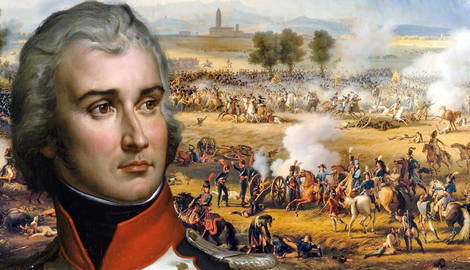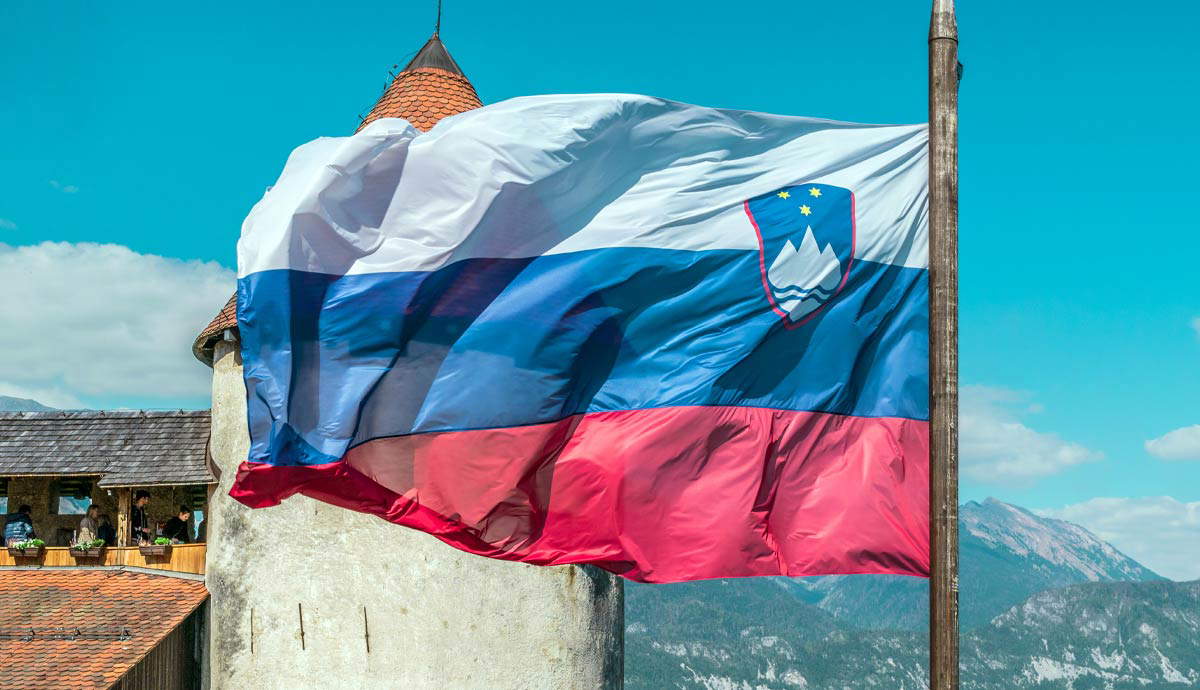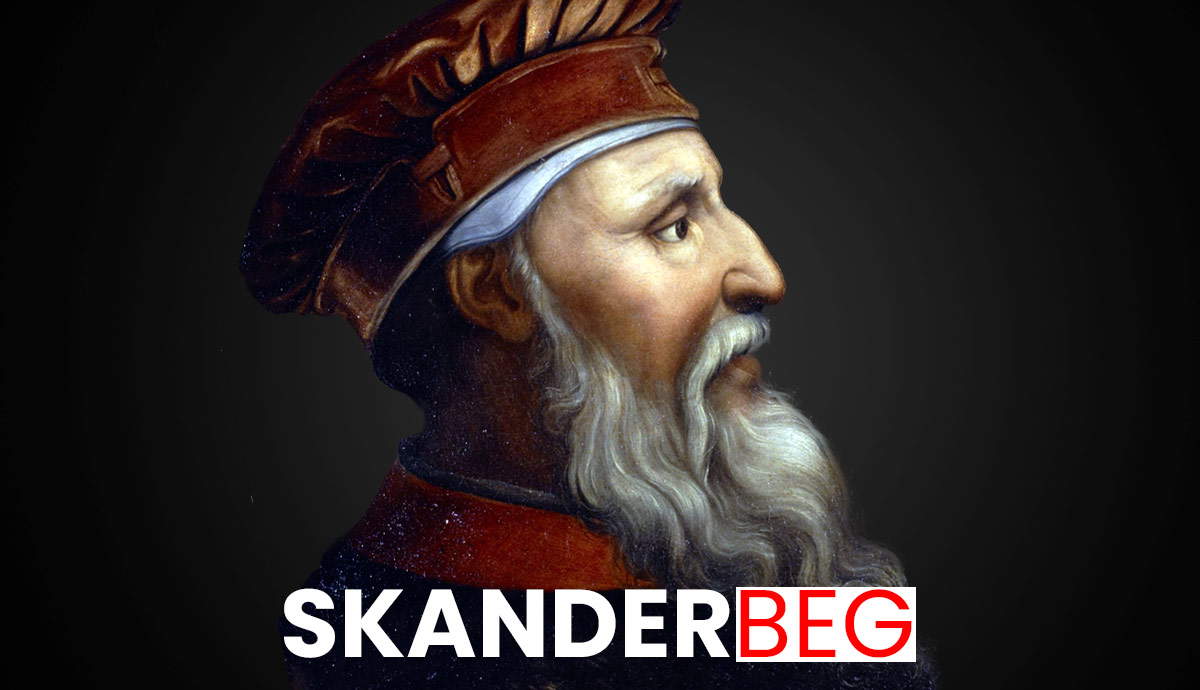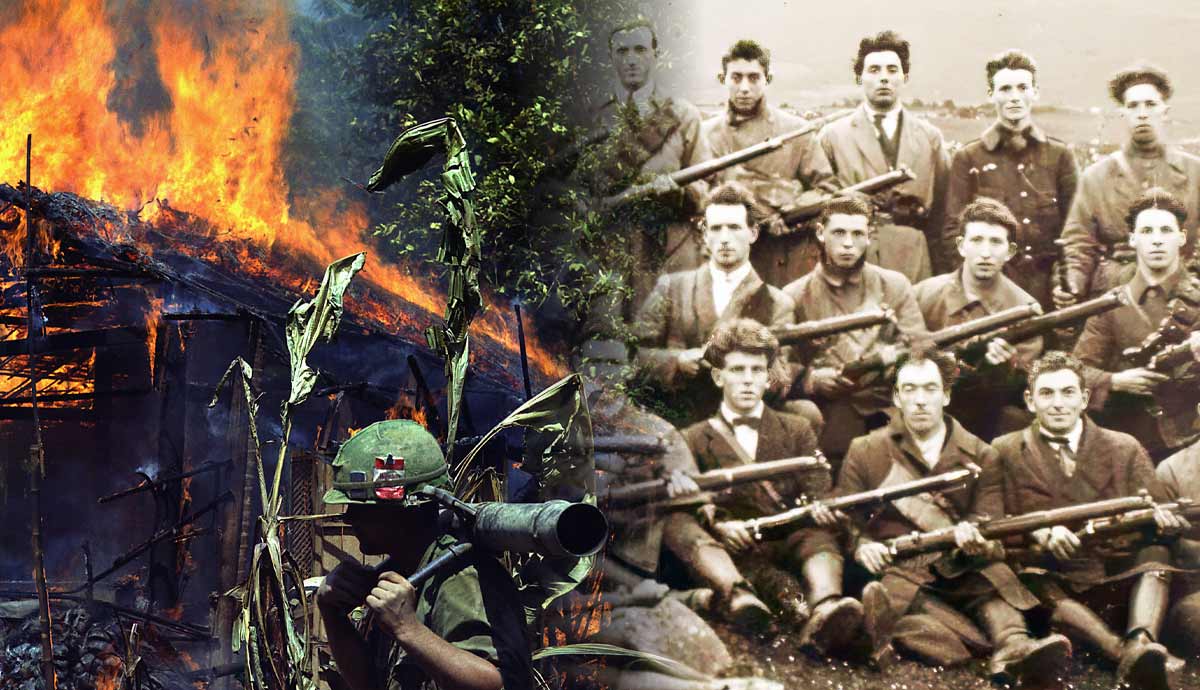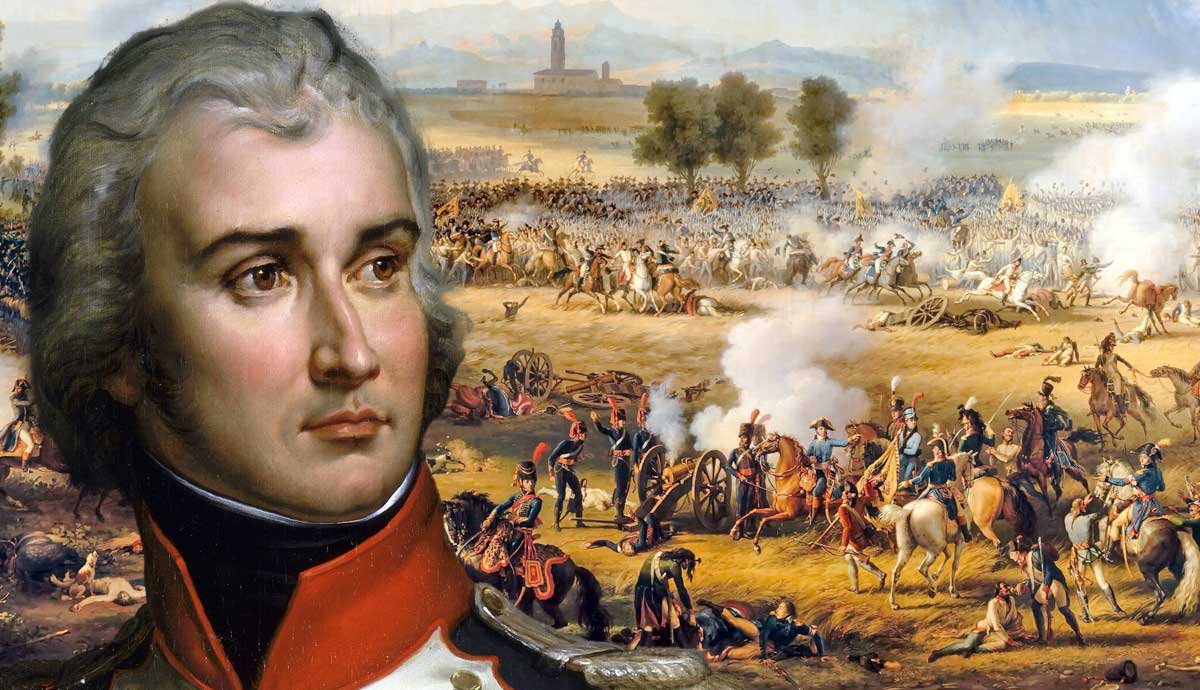
Born in Gascony in 1769, Jean Lannes joined the French army following the outbreak of the French Revolutionary Wars. By 1796, he met and befriended General Napoleon Bonaparte and accompanied him on his meteoric rise. A brave soldier, skilled tactician, and inspiring leader, Lannes was named among Napoleon’s marshals in 1804. He contributed to Napoleon’s victories at Austerlitz (1805), Jena (1806), and Friedland (1807), and his death in battle in 1809 deprived the emperor of a close friend.
Napoleon & Lannes

On the evening of June 13, 1807, acting on Emperor Napoleon’s orders, Marshal Jean Lannes hurried to occupy the town of Friedland on the left bank of the Alle River, now in the Russian exclave of Kaliningrad Oblast.
Napoleon had been campaigning for over eight months. Although his armies inflicted devastating defeats on the Prussian Army the previous October, Prussia’s Russian allies were more resilient. At the bloody Battle of Eylau on February 7-8, neither General Levin August Bennigsen’s Russians nor Napoleon’s Grande Armée could strike a decisive blow.
By June, both armies were on the move again. While Napoleon failed to dislodge Bennigsen from Heilsberg on June 10, he obliged the latter to withdraw by sending Lannes towards Friedland.
By the early hours of June 14, Lannes had only 10,000 men facing Bennigsen, who planned to sweep him aside with 45,000 men before continuing his retreat towards Königsberg to join up with a Prussian force. With the rest of his V Corps on the way, Lannes fought a defensive battle and used a number of mobile units to move along the four-mile front.
Lannes held on despite heavy casualties, and by late morning, he had almost 30,000 men with him. Napoleon arrived to take command at noon, and at 5 o’clock in the afternoon, he launched a general attack with some 70,000 men. With Bennigsen’s men trapped on the river’s western bank, French artillery tore into the Russian ranks. Thanks in large part to Lannes, Napoleon had won his decisive victory at the Battle of Friedland, and less than a month later, he made peace at Tilsit with Russia and Prussia.
The Young Gascon

Jean Lannes was born in April 1769 to a family of humble means in Gascony in southwestern France. Following the Revolution of 1789 and the outbreak of the War of the First Coalition in April 1792, Lannes joined a volunteer battalion in June.
At training camp, the 23-year-old Lannes found a mentor in the form of Lieutenant Pierre Charles Pouzet, who was three years his senior. In 1793, Lannes and his unit were sent to defend against a Spanish invasion over the Pyrénées. Despite poor leadership from officers and little military success, Lannes climbed rapidly up the ranks and was promoted to colonel within a year.
By June 1795, Lannes was in command of a demi-brigade of some 2,500 men in General Pierre Augureau’s division. When hostilities with Spain ended a few weeks later, Lannes and Augureau were transferred to the Army of Italy and saw action at the victory over an allied Austrian-Piedmontese army at the Battle of Loano at the end of November.
A Lifelong Friendship

In March 1796, the 26-year-old General Napoleon Bonaparte took command of the Army of Italy. After leading a vital bayonet charge at the Battle of Dego on April 15, Lannes was given command of three grenadier battalions and assigned to Bonaparte’s vanguard.
When Piedmont withdrew from the war at the end of April, Bonaparte surged into the Po valley and surprised the Austrians at Piacenza. After capturing 900 Austrians in the operation, Lannes drove the retreating Austrians towards Lodi. After capturing Lodi on May 10, Lannes joined several senior officers in leading the grenadiers across a bridge over the River Adda to overwhelm an Austrian rearguard on the far bank, opening the road to Milan.
At the Battle of Bassano in September, Lannes was wounded in an attack on the Austrian position and was recommended for promotion to general of brigade. A more serious wound a few days later caused him to be sent to Milan, but he returned to the field in November in time for the Battle of Arcole, where he was again wounded twice. Lannes witnessed several failed French attacks over the bridge over the River Adige. As he attempted to rally the men, Bonaparte’s horse slipped and tumbled into a ditch, placing him in considerable danger. Lannes responded by leading his column into the attack and captured the bridge, earning Bonaparte’s gratitude and lifelong friendship.
Eastern Adventures

As one of Napoleon’s trusted confidants, Lannes joined him on the expedition to Egypt in 1798, designed to sever Britain’s connection with her Indian colonies. Although initially attached to headquarters, he was soon given command of a division in Bonaparte’s Army of the Orient as it made its way across the desert toward Cairo.
As the newly established French authorities struggled to pacify Egypt, Lannes stayed behind in Cairo and helped to put down a major revolt against French occupation in October. British admiral Horatio Nelson’s destruction of the French fleet at the Battle of the Nile in early August had left Napoleon’s army trapped in Egypt. In early 1799, Napoleon attempted to fight his way through Syria and the Levant.
After joining Napoleon in February, Lannes’s division spearheaded the assault during the Siege of Jaffa on March 5. The Siege of Acre, which opened on March 19, proved a brutal affair. Lannes led several assaults but failed to break through. On May 7, he was seriously wounded in one of the final attacks and promoted to general of division before Napoleon decided to abandon the siege and return to Egypt.
When the British landed an Ottoman army at Aboukir on July 14, Lannes and his fellow Gascon Joachim Murat were sent to confront them. While Murat executed a brilliant cavalry charge to capture the Ottoman camp, driving many enemy troops into the sea, Lannes seized the town of Aboukir and was wounded while assaulting the citadel.
Napoleon’s Spearhead

In August 1799, Lannes was among the few officers chosen to accompany Bonaparte back to France at a time when French Republican armies were suffering setbacks on several fronts. Lannes helped secure the support of army officers for Bonaparte’s seizure of power in November but played no personal role in the events that made Napoleon the First Consul of the French Republic.
In the spring of 1800, First Consul Bonaparte planned to retake northern Italy from the Austrians. Lannes was given command of the vanguard and ordered to cross the Alps via the Great St. Bernard Pass. Lannes’s men overwhelmed several Austrian garrisons, allowing Bonaparte’s army to sweep into the plains of northern Italy, catching Austrian General Michael von Melas off-guard. Lannes followed up by defeating General Peter von Ott’s Austrian corps at Montebello on June 9.
On June 14, 1800, Lannes was among the 14,000 Frenchmen under heavy attack at Marengo from three strong Austrian columns commanded by Melas. Within a couple of hours, the French were compelled to withdraw from the field. While Melas left the field to write his “victory” report, General Louis Desaix arrived with 8,000 men and organized a counterattack.
Lannes rallied his men to the right of Desaix’s column, and though the latter was mortally wounded, Bonaparte had seized the initiative, and a devastating cavalry charge by Étienne Kellermann sealed an unlikely victory at the Battle of Marengo that helped Napoleon retake northern Italy and consolidate his political position in Paris.
Deception at the Tabor Bridge

In May 1804, while serving as French ambassador to the Portuguese court in Lisbon, Lannes was one of 18 officers awarded the title of Marshal of the Empire. He was recalled to Paris at the end of the year to attend Napoleon’s coronation before being assigned to the command of IV Corps as part of Napoleon’s preparations to invade England.
Over the course of the summer of 1805, once it became clear that the French navy would be unable to seize control of the English Channel to facilitate Napoleon’s intended invasion, the emperor turned his armies towards Habsburg Austria, Britain’s ally. Lannes’s men were redesignated as V Corps and formed part of the vanguard that distracted General Karl Mack’s Austrians at Ulm while the rest of the army encircled Mack’s army and forced it to surrender on October 20.
Although they had been personal rivals since the Egyptian campaign, Lannes and Murat then pursued General Mikhail Kutuzov’s Russians as they retreated down the Danube valley after Mack’s defeat. After overcoming a Russian rearguard at Amstetten on November 5, on the 13, Lannes and Murat captured the Tabor Bridge over the Danube near Vienna by deceiving the Austrian commander that an armistice had been signed.
After overcoming stiff resistance from General Pyotr Bagration’s rearguard at Schöngrabern on November 16, Lannes and Murat reached Brünn. On December 2, the two armies clashed at the Battle of Austerlitz to the southeast of Brünn. On the French left, Lannes beat off several counterattacks to push Bagration’s men away from the battlefield, while Marshal Davout held off the main allied attack on the right, and Marshal Soult delivered the fatal blow against the weakened allied center.
The Prussian Campaign

While Lannes complained that he was not given his fair share of the credit for the victory at Austerlitz, he played a central role in the 1806 campaign against Prussia. Once again in command of the vanguard, on October 10, he defeated a Prussian column and dealt a major blow to Prussian morale by killing its popular commander, Prince Louis Ferdinand, in the process.
After occupying Jena on the night of the 12th, Lannes deployed his men on the Landgrafenberg heights overlooking the town. During the early hours of the 14th, Lannes’s V Corps was at the center of the French line and was first into action at the Battle of Jena. When reserves under Marshal Michel Ney overextended themselves, Lannes threw his cavalry into the melée to rescue his beleaguered colleague.
Lannes’ men bore the brunt of French casualties at the victory at Jena and joined Murat in pursuing the defeated Prussians. On the same day, unbeknownst to those fighting at Jena, a heavily outnumbered Marshal Davout defeated the main Prussian army at Auerstedt ten miles away.
Lannes and Murat spent the rest of the year chasing the Prussians through eastern Germany and Poland. On December 26, he was wounded in battle against Bennigsen’s Russians and returned to Warsaw to recuperate, causing him to be absent from the bloodbath at Eylau.
The First to Fall

After Friedland and Tilsit, Lannes was awarded the Principality of Siewierz near Krakow. In March 1808, he was given the title of Duke of Montebello. Later that year, amid insurrections against French influence in Spain, Lannes joined Napoleon in his attempt to restore order. In command of an independent force of 30,000 men, Lannes defeated a Spanish army at Tuleda on November 23 before taking over the Siege of Zaragoza and successfully captured the town on February 19, 1809 after bitter street fighting.
Upon the resumption of hostilities with Austria in April, Lannes was ordered to join Napoleon’s Army of Germany and given command of II Corps. At the Battle of Ratisbon on April 23, Lannes seized a ladder and rushed towards a breach in the city wall, setting an example that inspired his men to capture the city.
Napoleon’s army advanced down the Danube and occupied Vienna on May 13. Facing Archduke Charles of Austria’s army, Lannes crossed the Danube at Essling on May 21. The following morning, Lannes’s men were poised to break through the Austrian center when they were thrown back by a counterattack led by the archduke. When Napoleon ordered his army to retreat to Vienna, Lannes fought a rearguard action to protect the withdrawal.
That afternoon, Lannes was talking to his old friend General Pouzet when the latter was decapitated by a cannonball. As the traumatized marshal went to a nearby tree and sat down to lament the death of his comrade, another Austrian cannonball shattered Lannes’ legs, mortally wounding him. When Lannes died on May 31, 1809 at the age of 40, Napoleon lost his first marshal and a close confidant.
